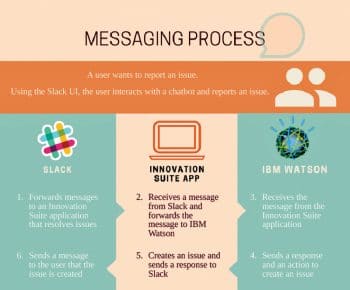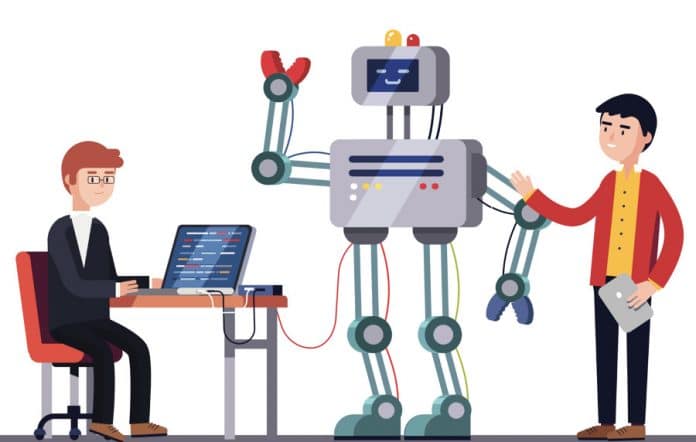The goal of using chatbots in customer service is to automate services that would otherwise have been performed by a human. Apart from the considerable economic savings afforded by a chatbot, a well-trained one can deliver better customer service too. The advent of AI and ML has been an important factor in the improvement and wider adoption of chatbots. Let’s take a quick look at the AI frameworks that help to build them.
“Hi Alexa, I’m home,” is possibly how millions of people now start their evenings, according to statistics published by Voicebot. The sales of smart speakers have been booming in the last two years, with Amazon holding the lion’s share of the market. Google Home has emerged as a challenger to Amazon’s throne, beating the latter’s sales consistently over the past few quarters. Hovering at a measly 6 per cent of market share is Apple trying to break into the voice commerce domain. Chatbots and voice assistants are going to share very fuzzy boundaries in the time to come.
Most of us might not have given a second thought to the message played when calling customer service representatives, which goes, “This call may be recorded for quality and training purposes.” What we might not immediately realise is that this could possibly be used to train an AI-backed chatbot to respond to customers. With automation and the capabilities to integrate AI into customer service, traditional customer service is increasingly being augmented by bots used to offload customer service workload from humans to software systems designed to handle these issues.
While Google is still rolling out its voice assistant Duplex to customers, Jin Rong from Alibaba’s Machine Intelligence and Technology Lab showed what the company’s AI team was already capable of at the 2018 Neural Information Processing Systems conference—an annual AI research gathering that is hailed as one of the largest gatherings of researchers in the field. Given the thousands of calls Alibaba receives daily, it might not be hard to find good training data for its bot. MIT Tech Review’s Karen Has outlines, in a more detailed article, how Alibaba has ambitions to build chatbots for services in a range of sectors that include a food-ordering agent and a price-haggling chatbot!
So the question then is: what exactly does it take to build such a chatbot? Let’s take a look!

AI frameworks for building chatbots
A number of frameworks and services have specialised libraries for natural language processing, all of which offer the scaffolding for building chatbots. These can then be trained or retrained using company-specific data in order to increase the accuracy of responses to the particular business use cases of the organisation.
1. IBM Watson: Still in the fray as a platform for building chatbots, Watson is one of the few to support Japanese as a language for building chatbots. Positioned as a solution that bridges the gap between technical and non-technical users, it can serve enterprises using pre-built industry-relevant content. In addition, it offers a variety of options including a graphical UI for bot-building that enables chatbots to be ready for deployment within a few weeks of training. Its clients include the likes of Autodesk, Credit Mutuel and U Bank. Watson has also been named the leader in Forrester’s New Wave report on Conversational Computing.
2. Botpress: Touting itself as an “on-premise, open-open-source bot-building framework made ‘by developers, for developers’,” Botpress offers an entire suite of tools that can be locally hosted at data centres belonging to the business(es) deploying them. This provides the much-needed control and flexibility for developers working on deploying these in production environments. The tools include flow editors, analytics; multi-channel conversations across Skype, Facebook Messenger, Slack, and so on.
3. Microsoft BotKit: Powered by Microsoft’s LUIS AI technology, BotKit approaches the problem at the grassroots level. It offers features that allow developers to create ‘building blocks for building bots’, as the company’s motto suggests. This is based on a JavaScript environment that supports various plugins centred around the product’s core functionality offered by LUIS Natural Language Processing.
4. Flow XO: As per the company’s site, Flow is a tool that helps in creating chatbots with ‘zero coding experience required’. The focus is on doing this by building workflows that can then be harnessed for data collection – for instance, dropping an email address from a conversation onto a MailChimp mailing list. Flow XO provides a variety of integrations across different platforms.

5. Chatfuel: Originally designed for making bots for Telegram, the messaging platform, Chatfuel’s service has gained in popularity since it introduced the capability to build bots for Facebook Messenger. It possesses a variety of analytics and CRM features baked in, but has some issues with the chatbot-to-human handoff bit of handling conversations with customers. Overall, though, this hasn’t deterred people from using it, given the ease of building chatbots that it offers.
6. ChattyPeople: This platform helps you build custom chatbots for Facebook and Slack. It offers to teach the skills required to make custom chatbots for small businesses, e-commerce and enterprises. An all-inclusive package creates, tests and deploys the bots to the selected messaging application, and backs that up with analytics to optimise the user experience.
7. Botsify: This is another popular Messenger chatbot platform. It uses a drag-and-drop interface supported by templates to enable users to create bots. A number of simplified integrations, analytics and services are available as plugins in order to simplify the development process for non-technical users.
8. Converse.ai: Integrations with Salesforce, Paypal and Stripe being its backbone, Converse allows users with little coding experience to quickly prototype and develop chatbots. One of its important selling points is analytics integration and its capability to work on multiple platforms.
9. Mobile Monkey: Touted as the ‘world’s best Messenger marketing platform’, Mobile Monkey builds on its strength of a wide user base by offering automated marketing techniques including customer segmentation, lead generation, ‘blast chat’ and other ideas to improve return on investments in advertisements.
A few other frameworks worth mentioning include PandoraBots, Floatbot.ai, ChatScript, Bottr, and Facebook’s own bot-creation toolkit for Messenger. These have unique features but share common themes including analytics, deployment, and ease-of-use for non-technical users.

Scope for growth
The world of chatbots is gaining traction as novel approaches boost the accuracy of natural language understanding. Apart from being strong markers of where the future of technology is headed, these ideas paint an interesting picture of at least one clear way that bots are going to impact our lives. When Google had a demo of its voice assistant that has the capabilities to take calls and book appointments on the owner’s behalf, it received mixed responses after the applause died down and people had a moment to consider its implications. It was complicated – there are ethical implications at play when you set AI against what is most likely a human on the other end, with the latter having no information beforehand that he or she will be dealing with a chatbot. The discussions will continue possibly for a long time before we arrive at a consensus but it is important, as we bake automation into more and more systems, that developers recognise the responsibilities they shoulder as they launch an AI chatbot into the public domain.
















































































